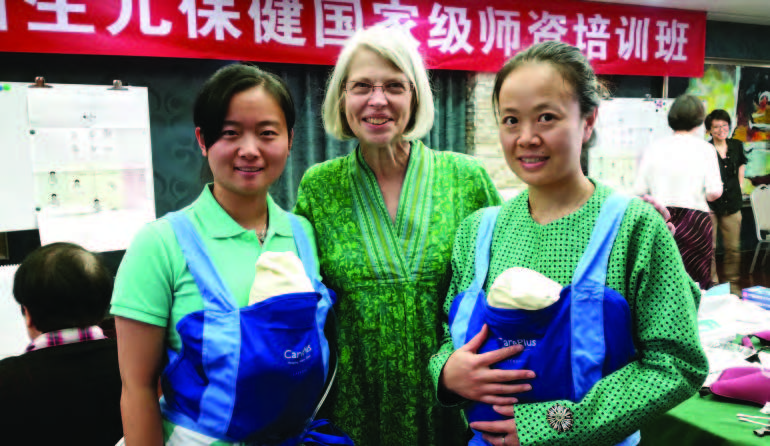Helping Babies Survive

In 2010, the American Academy of Pediatrics (AAP) launched Helping Babies Breathe (HBB), an international initiative to reduce newborn deaths in areas with limited resources. The evidence-based effort, developed in collaboration with the World Health Organization and other global health partners, integrates hands-on interventions to counter the most common causes of preventable neonatal mortality. More than 850,000 providers in 80-plus countries have received HBB training to date, and digital technology promises exponential expansion.
HBB techniques and its train-the-trainer process specifically target perinatal asphyxia, the inability of a newborn to breathe effectively at birth. Emphasis is placed on assessing each baby, maintaining body temperature, providing stimulation for the newborn to breathe, and assisting with ventilation—all within 60 seconds.
“This is the ‘Golden Minute’,” confirms neonatologist Susan Niermeyer, MD, MPH, a member of the original HBB Planning Group and a Career Teaching Scholar of the Department of Pediatrics at the University of Colorado School of Medicine. “Without those basics in the first minute, the entire trajectory of that life changes.” She cites multiple studies confirming such immediate support “can result in a 30% to 40% decrease in death in the first 24 hours. We’ve also seen a similar decrease in the number of fresh stillbirths—babies who were still (not breathing or moving) at birth as the result of some asphyxia during the birth process, but had a heartbeat and survived with intervention.”
HBB has since become the cornerstone for Helping Babies Survive (HBS), a broader AAP international initiative targeting essential care for all newborns, specialized care for small and preterm babies, delivery practices, and infection prevention. Niermeyer sees a direct connection between strides being made today through these global programs and the innovations of “baby whisperer” Lula Lubchenco, MD, and L. Joseph Butterfield, MD, a half century ago. These pioneers created programs that nurtured a generation of neonatologists, including Niermeyer and her HBB Task Force colleague George Little, MD, now a Professor of Neonatology and Perinatology at Dartmouth’s Geisel School of Medicine.
The Perinatal Outreach Education Program (POEP) Butterfield launched in 1965, in conjunction with the opening of the Newborn Center, was the first to provide regional caregivers knowledge, training, and a telephone hotline for consultations and transport. The program’s success in educating interprofessional maternal-fetal and newborn teams to stabilize and treat critically ill newborns transformed regional care and reduced Colorado’s infant mortality rate from the sixth highest in the nation to the second lowest between 1960 and 1978.
This Colorado work dovetailed with the nationwide Neonatal Resuscitation Program (NRP) sponsored by the American Academy of Pediatrics (AAP) and American Heart Association (AHA). Niermeyer and Susan Clarke, POEP nurse coordinator during and after the Butterfield years, were part of the first national NRP group trained in 1988 and part of the first international HBB group trained in 2010. In addition to reaching out to caregivers in Colorado, Wyoming, Kansas, Nebraska, and Montana, they worked collaboratively with regional centers in neighboring Arizona, New Mexico, and Utah to convey a unified message. Today, Clarke serves as a Master Trainer with Helping Babies Survive, helping ensure the life-saving knowledge and clinical skills are shared and implemented globally.
To think that global neonatal mortality has decreased from 14,000 deaths every day in 1990 to 7,000 deaths every day in 2018 gives me goose bumps. The work is not done, and the perinatal outreach train-the-trainer model is key to further improvement of newborn survival globally.
–Susan B. Clarke, MS, RNC-NIC, CNS